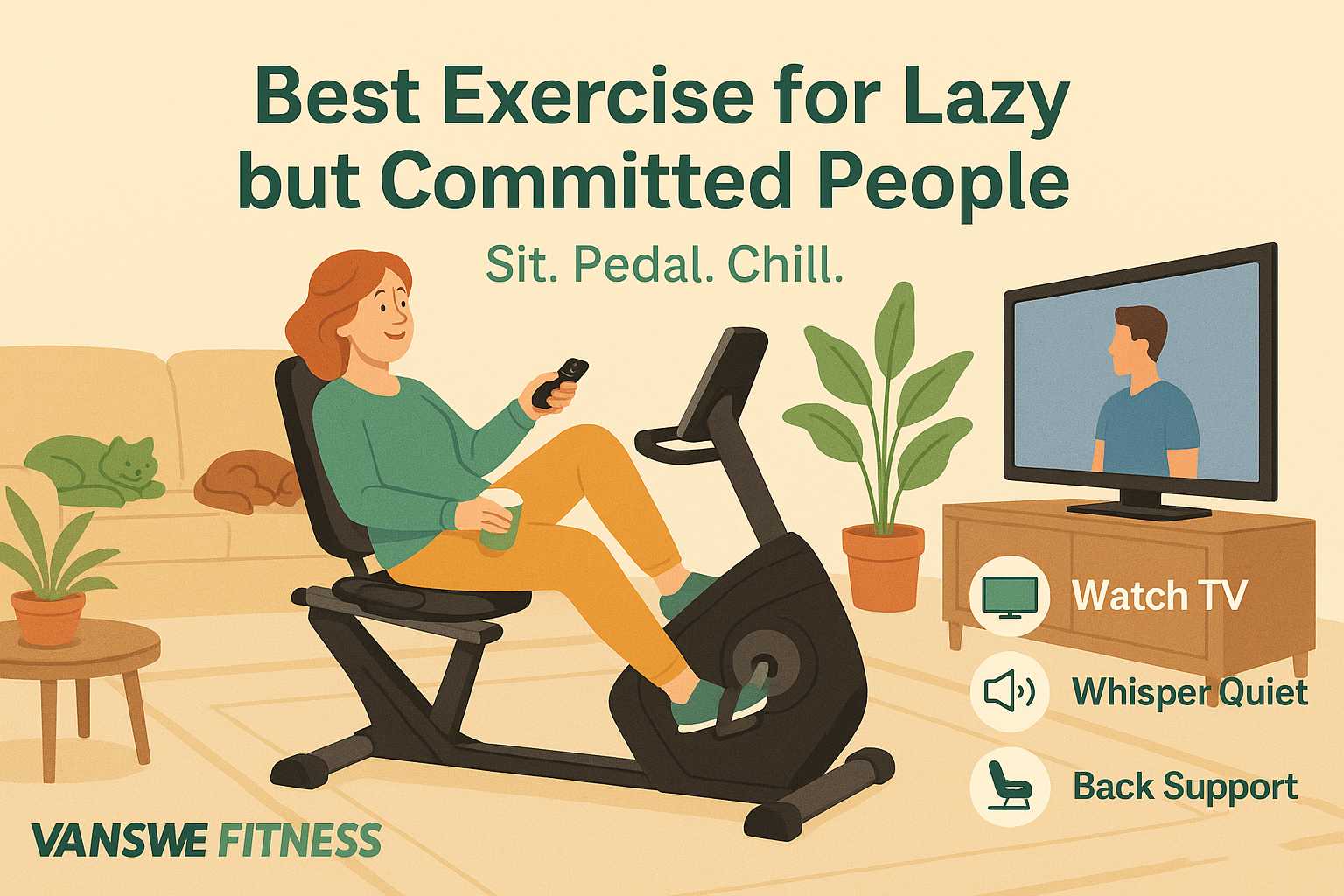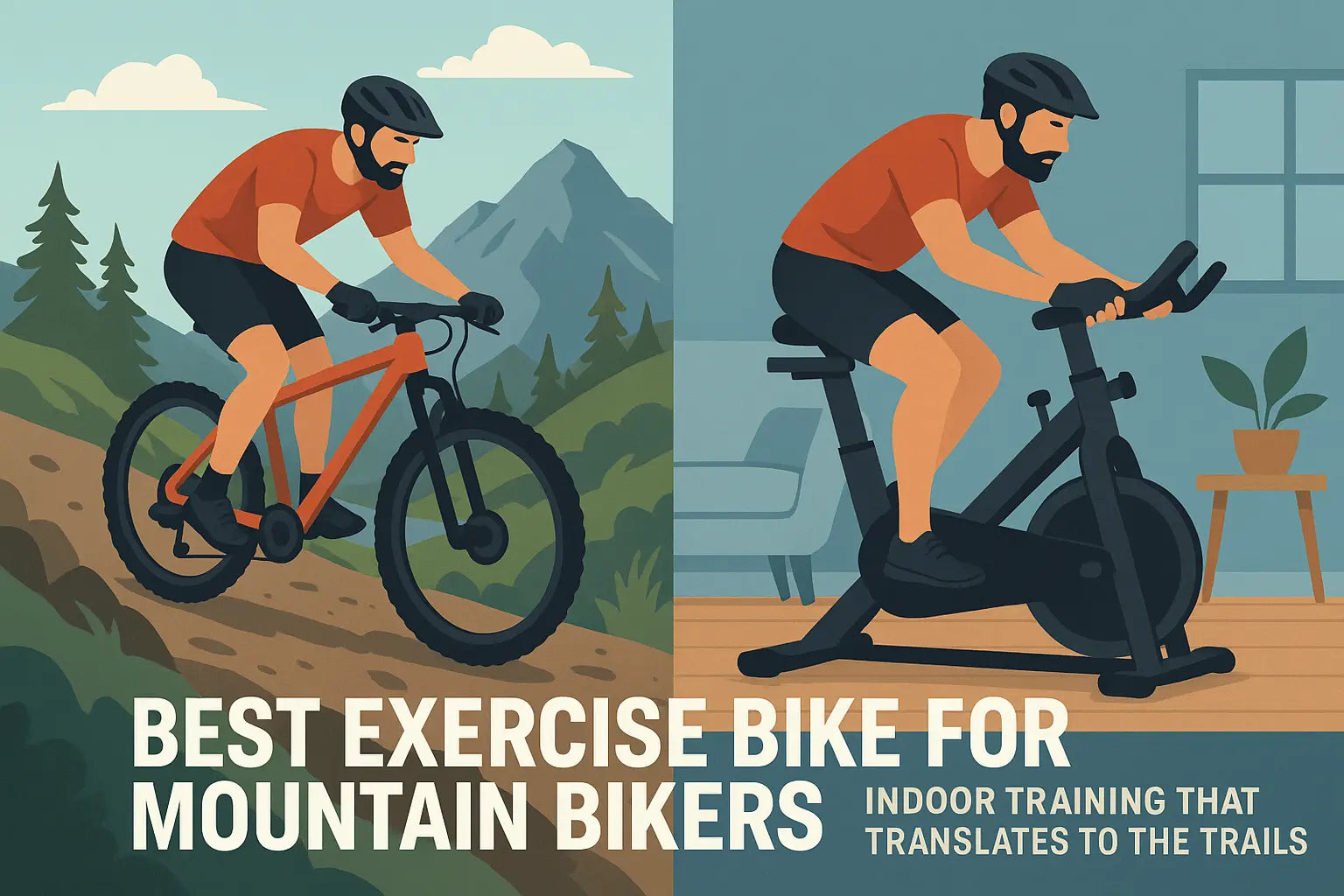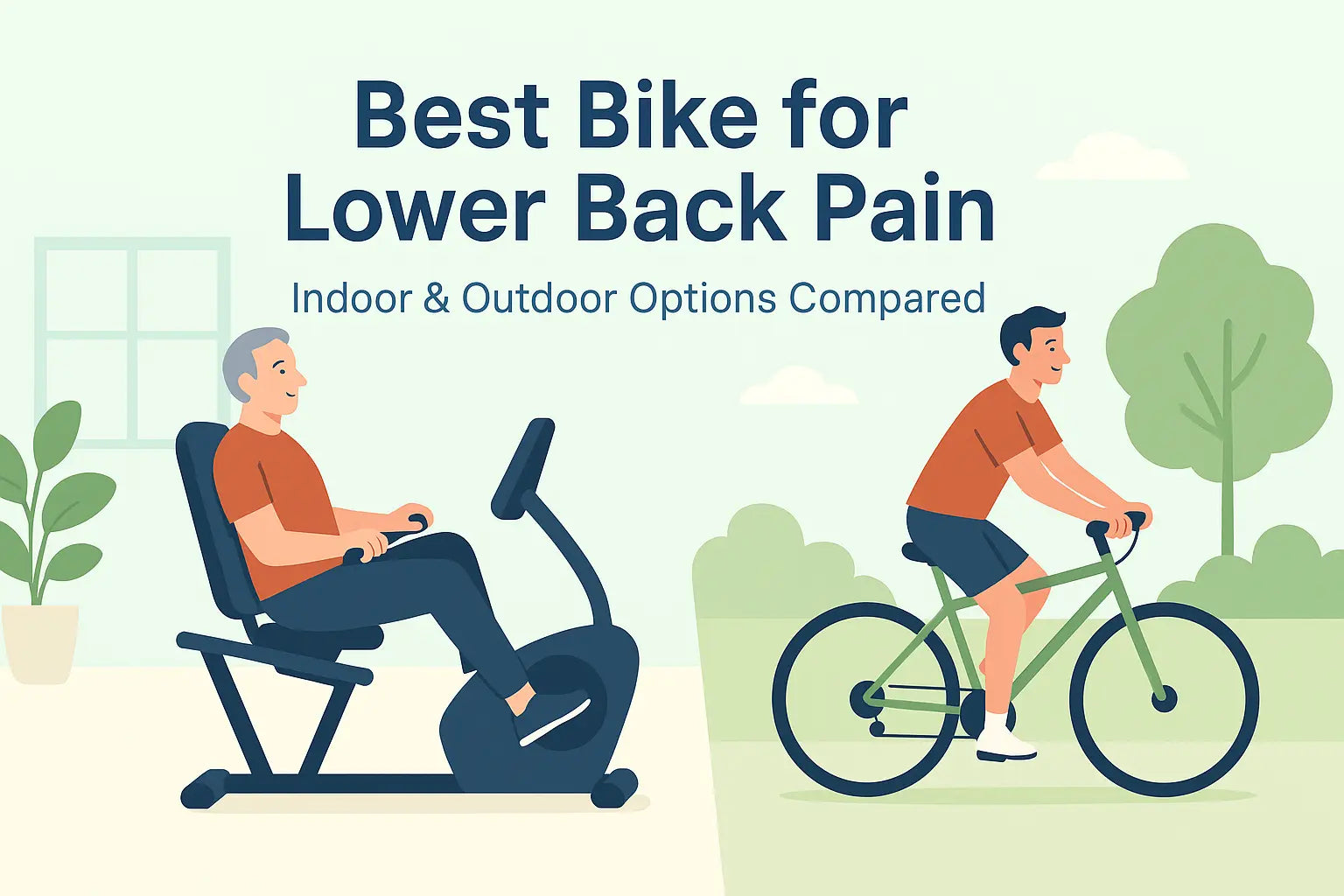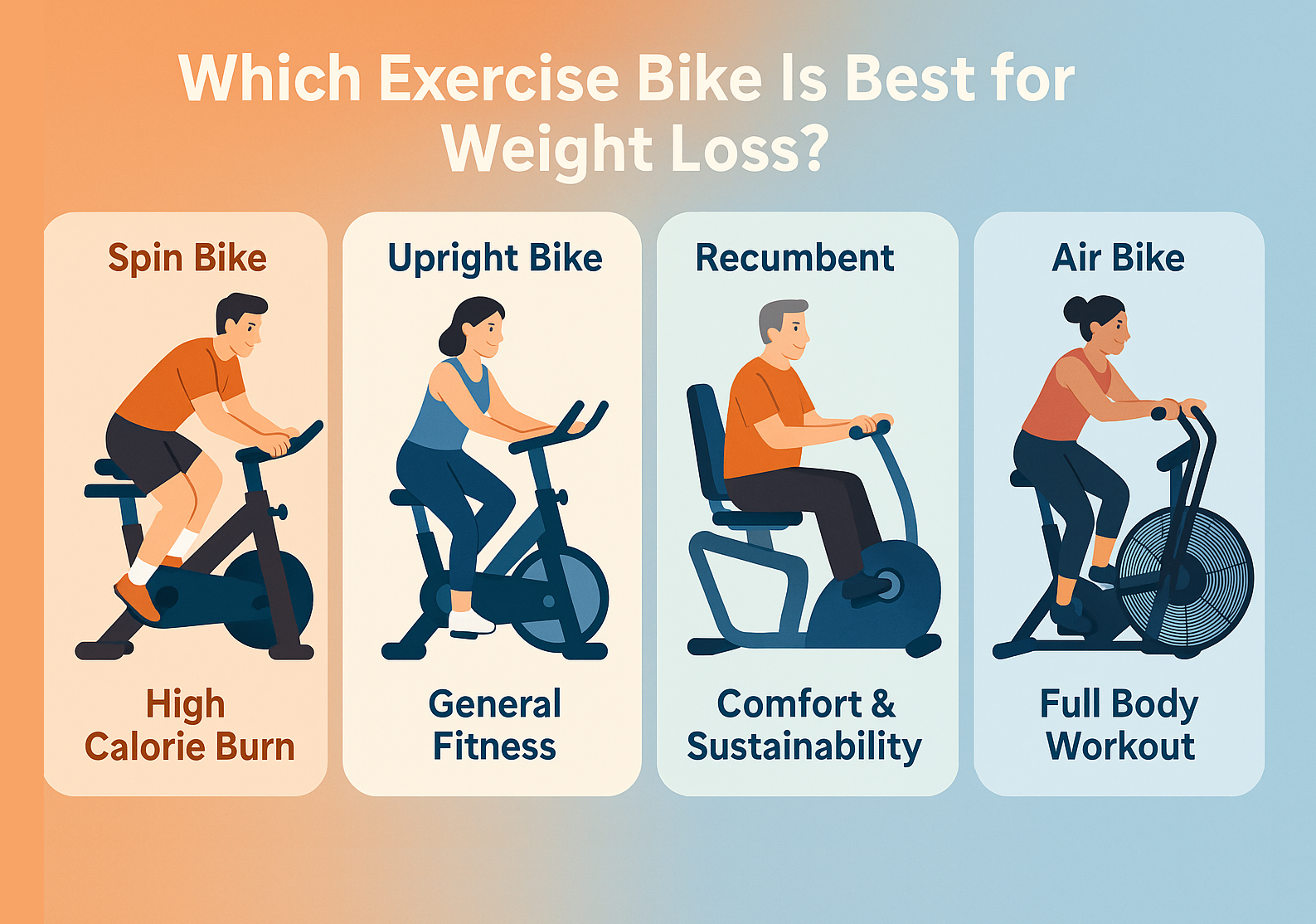Yes, a recumbent bike is good for sciatica because it reduces spinal pressure, supports the lower back, improves circulation, and promotes mental health through low-impact exercise. A stationary bike is also a beneficial low-impact exercise option for people with sciatica and lower back pain, offering similar advantages in terms of comfort and support. According to a 2015 study titled “Advice to Stay Active or Structured Exercise in the Management of Sciatica” [1], it provides four key benefits for sciatica relief and pain relief from lower back pain:
- Reduced Spinal Pressure: The semi-reclined position minimizes pressure on the lumbar discs.
- Comfortable Seated Support: The backrest provides lumbar support, decreasing stress on the lower back.
- Improved Circulation: Gentle pedaling enhances blood flow to the affected area, delivering more oxygen and essential nutrients to nerves and tissues, which is beneficial for aiding recovery.
- Mental Health Boost: Regular activity helps reduce anxiety and depression, often linked to chronic pain.
These benefits are particularly beneficial for people seeking pain relief from sciatica and lower back pain.
Is Walking or Cycling Better for Sciatica?
Cycling, especially in a recumbent position, can be better and more comfortable for many people with sciatica than walking, though for some, a walk may still be a good option depending on their sciatica symptoms. The seated, reclined posture with leg extension reduces the load on the spine while still allowing cardiovascular activity. A study from Finland even found that people who walked or cycled to work were 33% less likely to require sciatica surgery.
According to a 2017 study titled “Lifestyle Risk Factors Increase the Risk of Hospitalization for Sciatica: Findings of Four Prospective Cohort Studies” [2], both walking and cycling offer benefits. Walking helps maintain mobility and promotes circulation, but for individuals with spinal compression or significant leg pain, it may be too painful. Both a walk and a ride on a bike can help reduce sciatica symptoms, but the best choice depends on the person and their specific condition.
Recumbent biking is a good option for those who find walking or upright cycling uncomfortable.
Can a Recumbent Bike Aggravate Sciatica?
Yes, a recumbent bike can aggravate sciatica if the seat is poorly adjusted, support is lacking, or resistance is too high too soon. Improper use may even lead to shooting pains, a common symptom of nerve irritation. Common causes include prolonged sitting, incorrect recumbent bike position, poor pedal alignment, and insufficient lumbar support.
Common issues to watch out for include:
- Extended Sitting Duration: Long periods of sitting without breaks may lead to stiffness and increased discomfort.
- Incorrect Seat Positioning: A seat that is too far forward or backward can place strain on the lumbar spine.
- Poor Pedal Alignment: Improper foot or leg positioning can create uneven force distribution, irritating the sciatic nerve.
- Lack of Lumbar Support: Without adequate support, the natural curve of the spine may be compromised.
- High Resistance Too Early: Starting with high resistance levels can strain muscles and joints, worsening symptoms or even causing injury.
To minimize risk, start slowly, make ergonomic adjustments, and seek guidance from a physiotherapist or medical professional before beginning a new exercise routine. While recumbent bikes allow you to exercise without having to stand, always monitor for any new or worsening symptoms.
Tips for Safe Use
- Begin with low resistance and short sessions (10–15 minutes). Start with light movement to allow your body to adjust and avoid aggravating symptoms.
- Maintain contact between your lower back and the backrest.
- Use a lumbar support cushion if needed.
- Adjust the seat to ensure knees are slightly bent when pedaling.
- Perform gentle stretches and a stretching routine before and after sessions to prevent stiffness. Incorporate stretches that target the lower back and legs, but avoid any that worsen your symptoms.
- Focus on maintaining proper form while exercising to prevent injury and ensure effective movement.
- Allow adequate rest between sessions to support recovery and promote healing.
FAQ
What Exercise Machines Should I Avoid with Sciatica?
Machines that involve excessive spinal flexion or twisting, such as rowing machines, stair climbers, and poorly adjusted upright stationary bikes, should generally be avoided. These machines can aggravate sciatica pain, especially in people with a herniated disc. High-impact machines like treadmills at high speed or incline may also aggravate nerve compression. Likewise, spin bikes that encourage forward-leaning postures can increase lower back stress if the core isn’t engaged or the seat is poorly positioned.
Instead, experts recommend low-impact, controlled movements. Exercise machines that provide support for the back and minimize shock or jarring are ideal. This is where the recumbent bike shines, as it supports the legs and reduces pressure on the nerves. Always pay attention to your body's signals and stop exercising at the point of discomfort.
Conclusion
A recumbent bike can be a gentle and helpful way to stay active when dealing with sciatica and other joint issue. Its supportive seat and reclined position take pressure off your lower back, making it more comfortable than many other types of exercise. Still, it's important to avoid things like sitting too long or using the wrong seat position, as they can make symptoms worse. Start slow, adjust your bike to fit you well, and talk to your doctor or physical therapist to make sure it's right for you.
Refference
- Fernandez M, Hartvigsen J, Ferreira ML, Refshauge KM, Machado AF, Lemes ÍR, Maher CG, Ferreira PH. Advice to Stay Active or Structured Exercise in the Management of Sciatica: A Systematic Review and Meta-analysis. Spine (Phila Pa 1976). 2015 Sep 15;40(18):1457-66. doi: 10.1097/BRS.0000000000001036. PMID: 26165218.
- Shiri R, Euro U, Heliövaara M, Hirvensalo M, Husgafvel-Pursiainen K, Karppinen J, Lahti J, Rahkonen O, Raitakari OT, Solovieva S, Yang X, Viikari-Juntura E, Lallukka T. Lifestyle Risk Factors Increase the Risk of Hospitalization for Sciatica: Findings of Four Prospective Cohort Studies. Am J Med. 2017 Dec;130(12):1408-1414.e6. doi: 10.1016/j.amjmed.2017.06.027. Epub 2017 Jul 24. PMID: 28750940.
Latest Articles







